

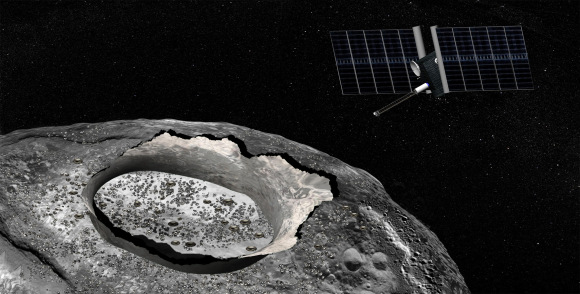
Artist’s concept of the Psyche spacecraft, a proposed mission for NASA’s Discovery program
that would explore the huge metal Psyche asteroid from orbit.
Credit: NASA/JPL-Caltech

The huge metal asteroid Psyche may have a strong remnant magnetic field. Credit: Damir Gamulin/Ben Weiss
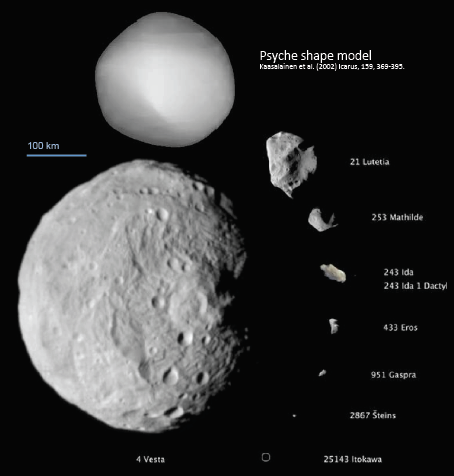
The asteroid Psyche is one of the larger asteroids. Credit: Lindy T. Elkins-Tanton
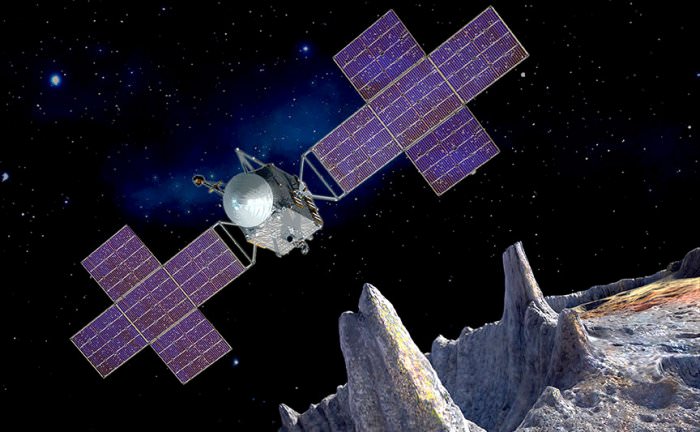
This illustration depicts the spacecraft of NASA's Psyche mission orbiting the metal asteroid Psyche (pronounced SY-kee). Solar power with electric propulsion will be used to propel the spacecraft to Psyche. The asteroid's average distance from the sun is about three times the Earth's distance or 280 million miles. Credit: SSL/ASU/P. Rubin/NASA/JPL-Caltech
Animation of spacecraft flying around asteroid Psyche. NASA news release:
We are using our vacuum chamber to test the Hall Effect Rocket with Magnetic Shielding (HERMeS) thruster, which could propel NASA’s future vehicles to deep space. It operates at 12.5 kW; three times greater power than existing systems. (audio-music) Video credit: NASA Rami Daud, Alcyon Technical Services
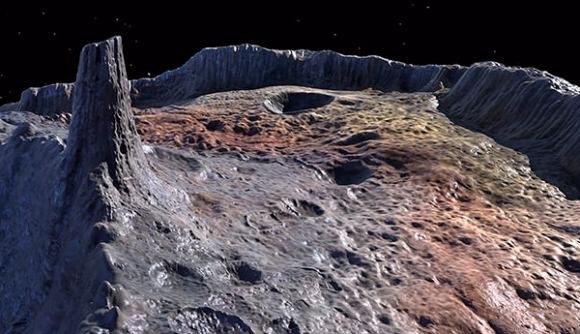
Artist’s impression of the surface of 16 Psyche. Credit: Arizona State University / NASA
NASA is eyeing up a nearby asteroid that contains enough gold to make everyone on Earth a billionaire.
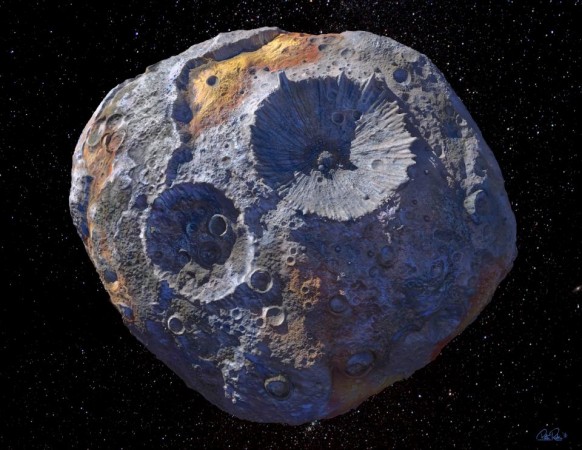
It has been said that within the next quarter century, the world’s first trillionaires will emerge. It is also predicted that much of their wealth will stem from asteroid mining, a burgeoning space industry where minerals and volatile compounds will be harvested from Near-Earth Asteroids. This industry promises to flood the market with ample supplies of precious metals like gold, silver and platinum.
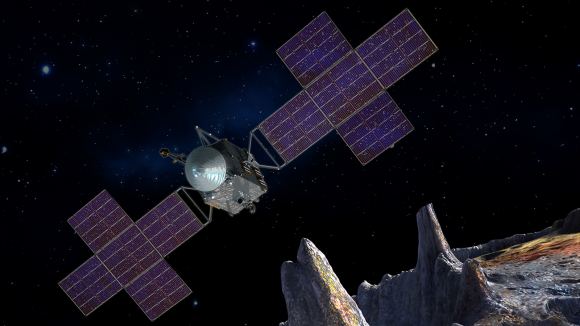
Artist’s impression of NASA’s asteroid mission nearing the surface of the Psyche. Credit: NASA/JPL-Caltech
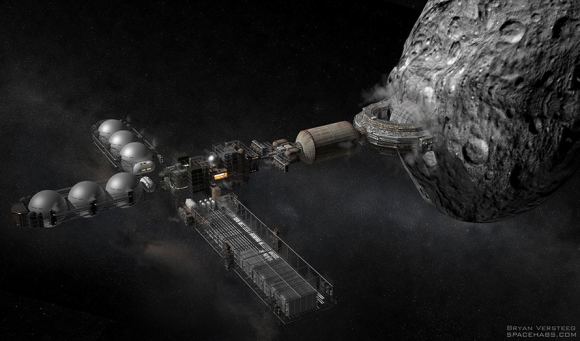
Artist’s impression of an asteroid smelter Credit: Bryan Versteeg, spacehabs.com

An artist’s illustration of a metallic asteroid like Psyche. Credit: Elena Hartley/USC
Psyche is both the name of an asteroid orbiting the Sun between Mars and Jupiter — and the name of a NASA space mission to visit that asteroid, led by Arizona State University. Join the Psyche team to explore why this mission was selected for NASA’s Discovery Program, how we’ll get to the asteroid, what we hope to learn from Psyche, and the importance of scientific discovery. Credits: NASA/JPL-Caltech/Arizona State Univ./Peter Rubin/SSL
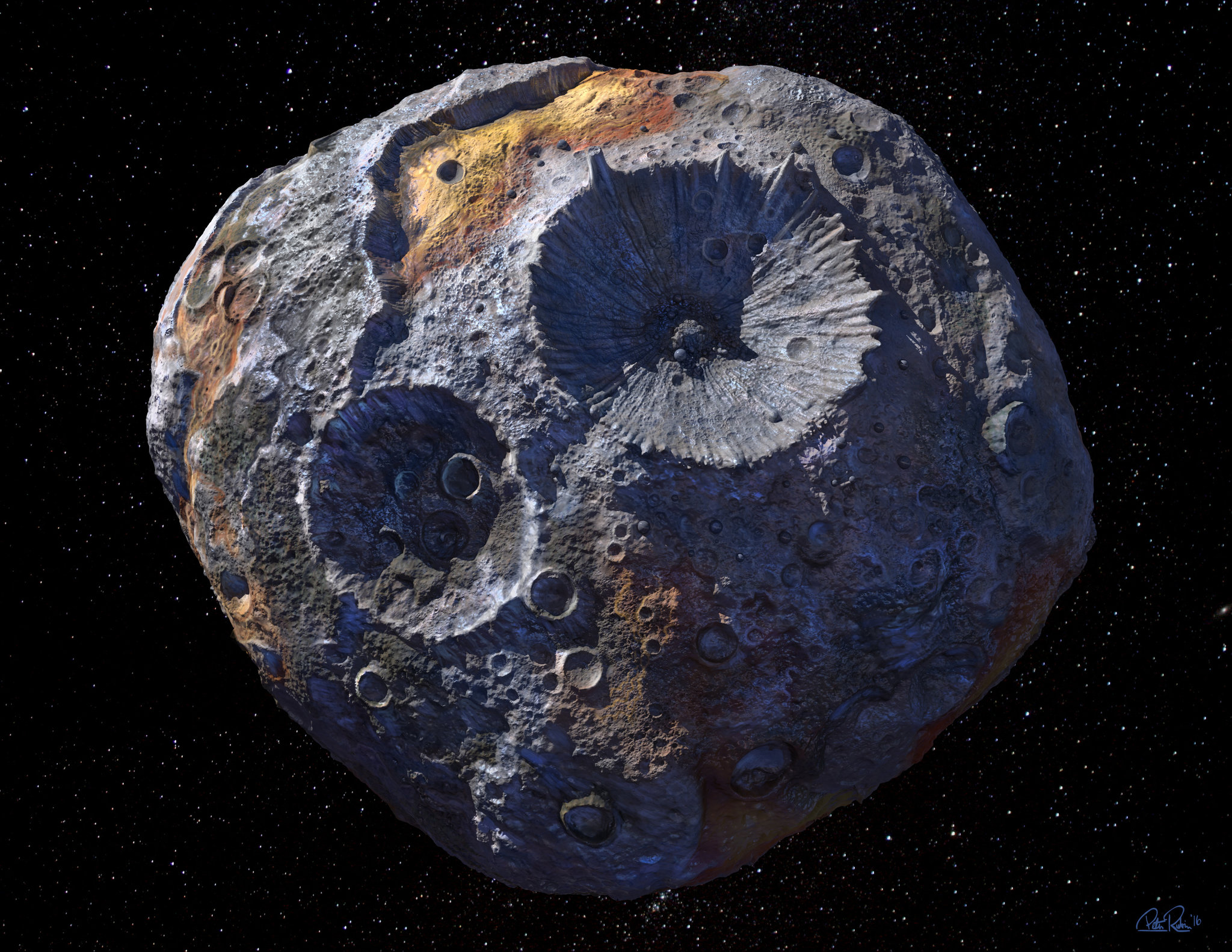
Published on Jan 4, 2017 On Jan. 4, NASA announced the selection of two missions to explore previously unexplored asteroids. The first mission, called Lucy, will study asteroids, known as Trojan asteroids, trapped by Jupiter’s gravity. The Psyche mission will explore a very large and rare object in the solar system’s asteroid belt that’s made of metal, and scientists believe might be the exposed core of a planet that lost its rocky outer layers from a series of violent collisions. Lucy is targeted for launch in 2021 and Psyche in 2023. Both missions have the potential to open new windows on one of the earliest eras in the history of our solar system – a time less than 10 million years after the birth of our sun. Category Science & Technology License Standard YouTube License
Artist’s concept of the Lucy spacecraft flying by Eurybates, one of the six diverse and scientifically important Trojans it will study. Credit: SwRI
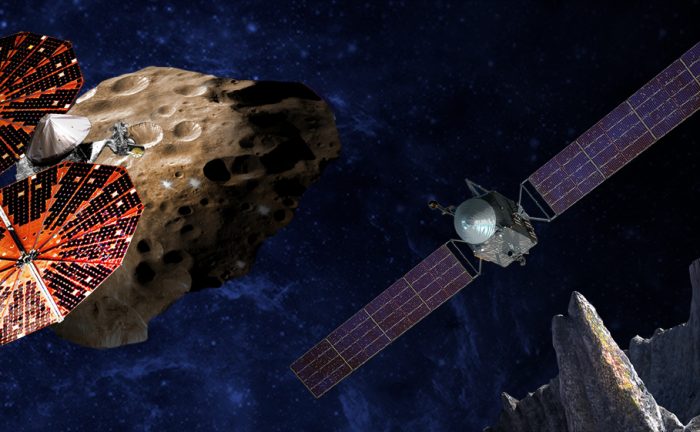
An artist’s conception of the Lucy spacecraft (left) flying by the Trojan Eurybates, and Psyche (Right) Psyche, the first mission to the metal world 16 Psyche. Credits: SwRI and SSL/Peter Rubin
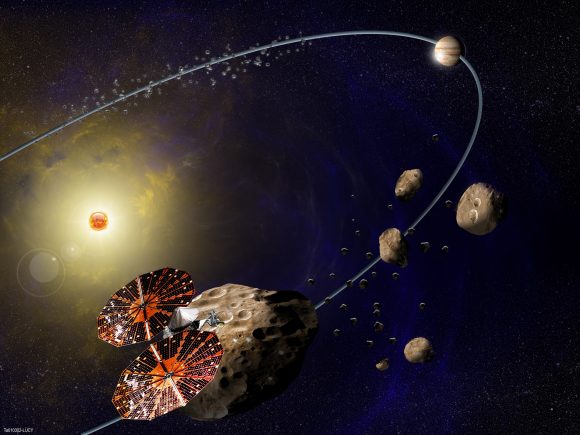
Artist’s concept of the Lucy spacecraft flying by Eurybates, one of the six diverse and scientifically important Trojans it will study. Credit: SwRI
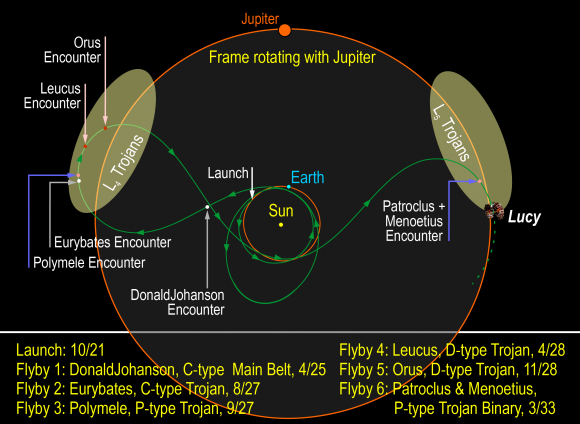
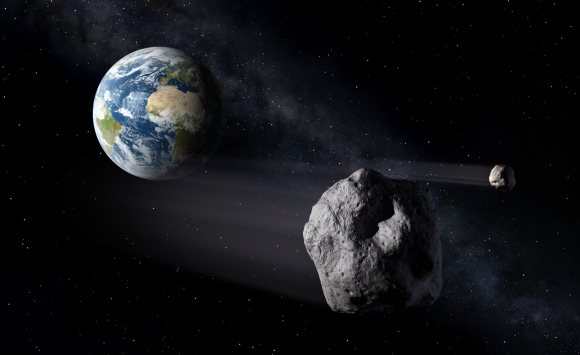
Near-Earth Asteroids (NEO) of large size can potentially orbit close to Earth, making them Potentially Hazardous Objects (PHO). Credit: ESA
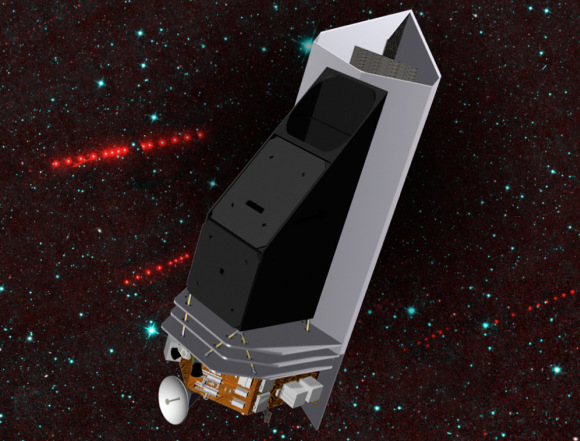
Artist’s concept of the NEOCam spacecraft, a proposed mission for NASA’s Discovery program that would search for potentially hazardous near-Earth asteroids.
Credit: NASA/JPL-Caltech
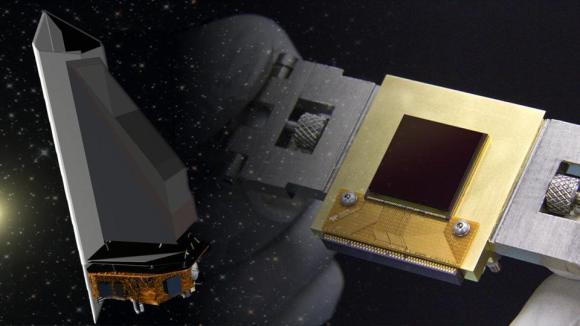
The NEOCam sensor (right) is the lynchpin for the proposed Near Earth Object Camera, or NEOCam, space mission (left).
Credit: NASA/JPL-Caltech
by KEN KREMER on OCTOBER 27, 2015
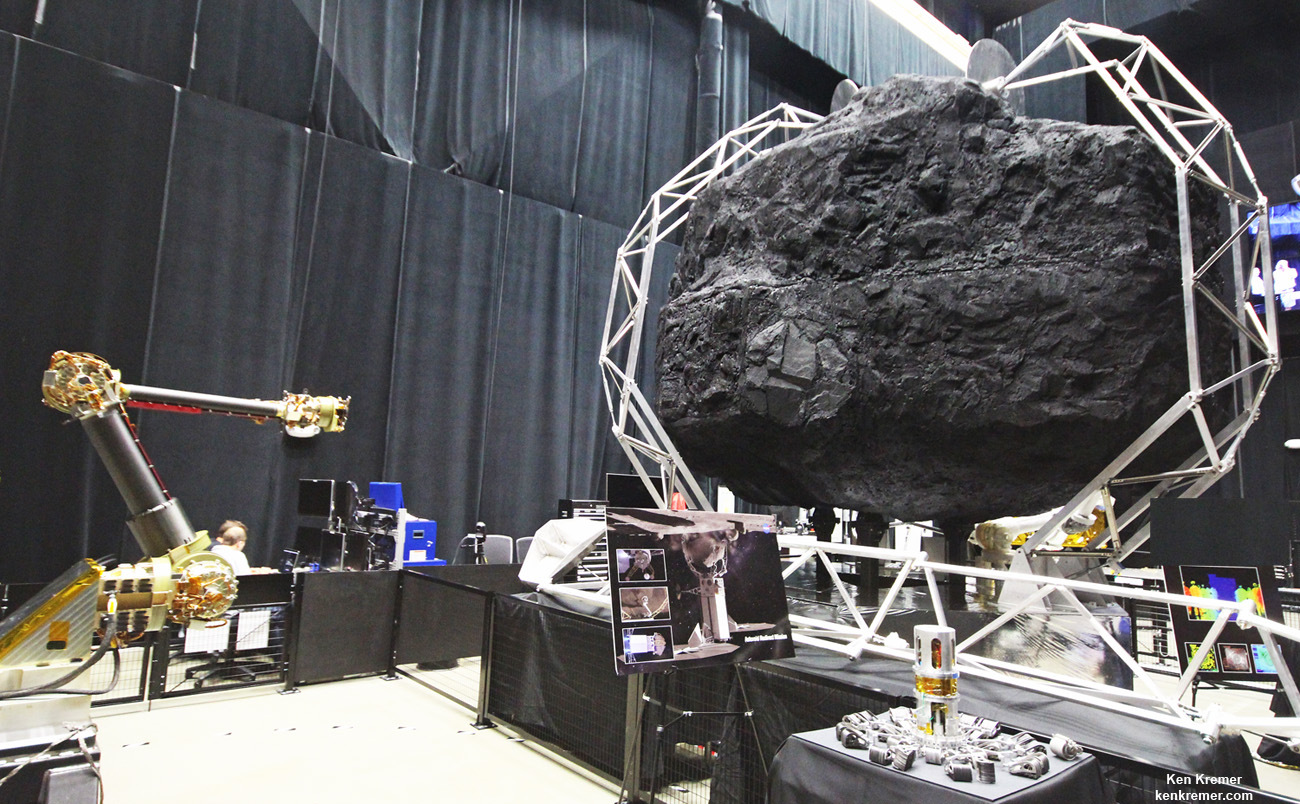
Robotic sampling arm and capture mechanism to collect a multi-ton boulder from an asteroid are under development
at NASA Goddard and other agency centers for NASA’s unmanned Asteroid Redirect Vehicle and eventual docking in
lunar orbit with Orion crew vehicle by the mid 2020s. Credit: Ken Kremer
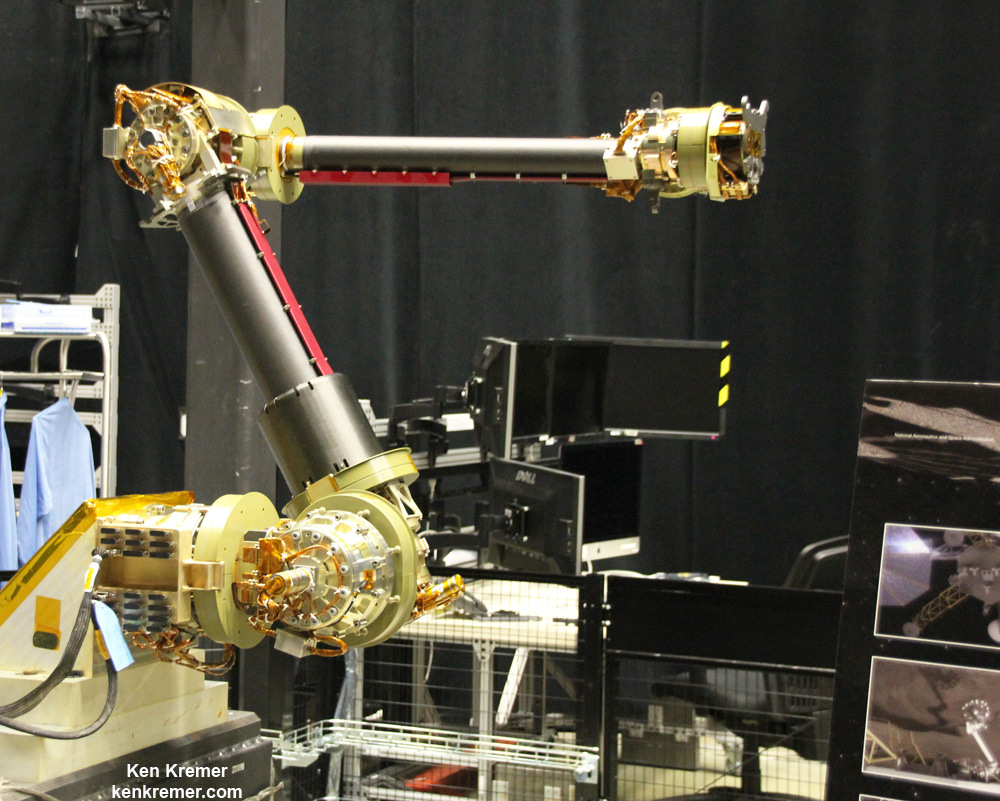
This engineering design unit of the robotic servicing arm is under development to autonomously extract
a boulder off an asteroid for NASA’s asteroid retrieval mission and is being tested at NASA Goddard.
It has seven degrees of freedom and mimics a human arm. Credit: Ken Kremer
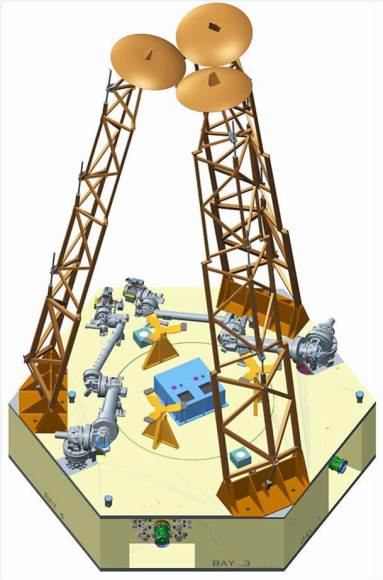
Capture Module comprising two robotic servicing arms and three boulder grappling contact
and restraint system legs for NASA’s Asteroid Redirect Robotic Mission (ARRM).
Credit: NASA
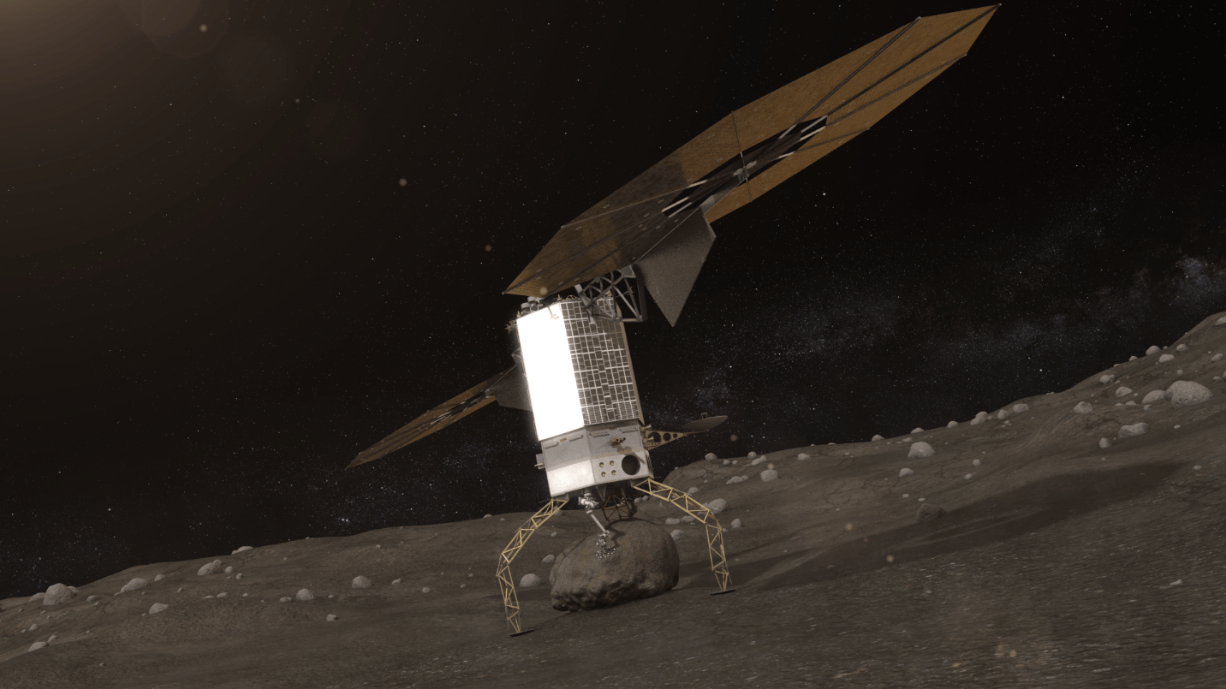
Artists concept of NASA’s Asteroid Redirect Robotic Mission capturing an asteroid boulder
before redirecting it to a astronaut-accessible orbit around Earth’s moon.
Credits: NASA
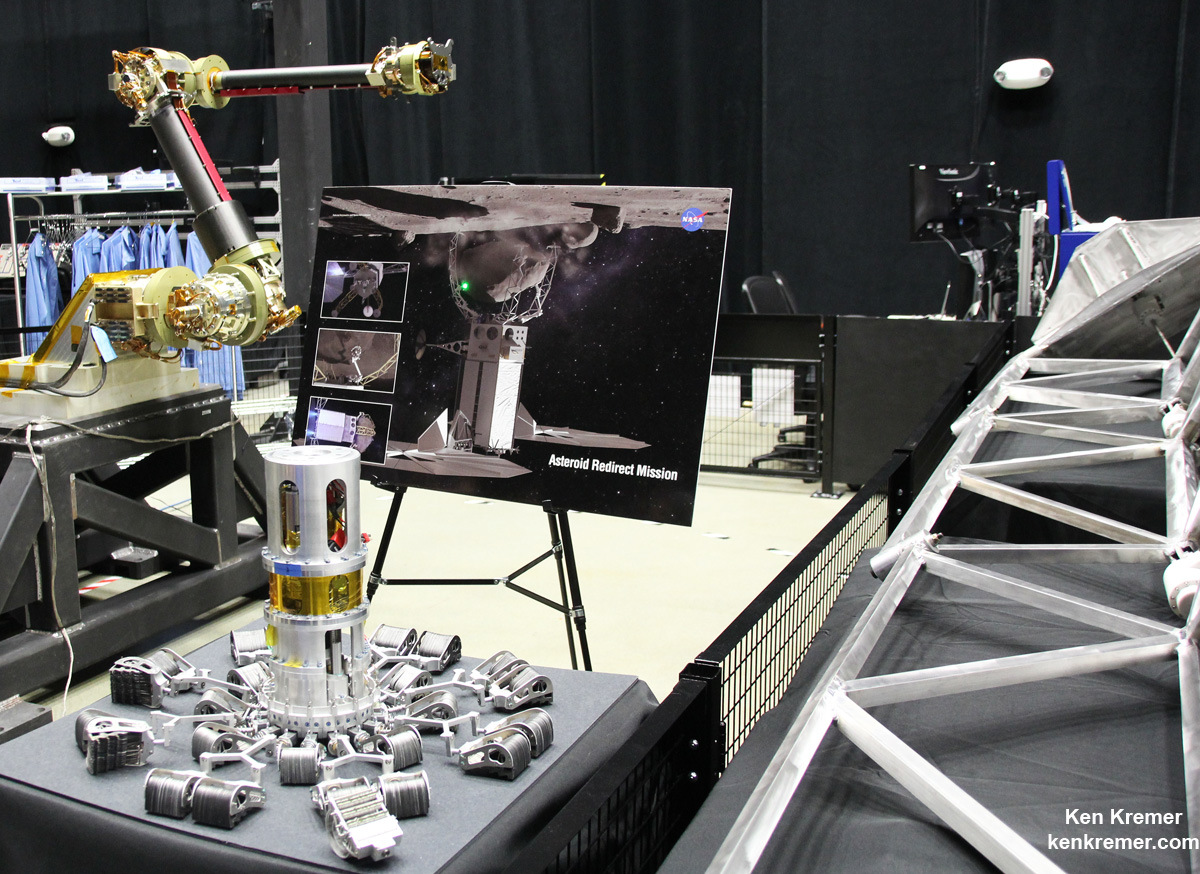
View of the robotic arm above and gripper tool below that initially grabs the asteroid boulder
before the capture legs wrap around as planned for NASA’s upcoming unmanned ARRM Asteroid Redirect Robotic Mission
that will later dock with an Orion crew vehicle.
Credit: Ken Kremer
Published on Mar 26, 2015 This concept animation illustrates the robotic segment of NASA's Asteroid Redirect Mission. The Asteroid Redirect Vehicle, powered by solar electric propulsion, travels to a large asteroid to robotically collect a boulder from its surface. It then conducts a "gravity tractor" planetary defense demonstration on the asteroid before bringing the captured boulder to a stable orbit around the moon where astronauts can visit, explore, and sample it. Category Science & Technology License Standard YouTube License
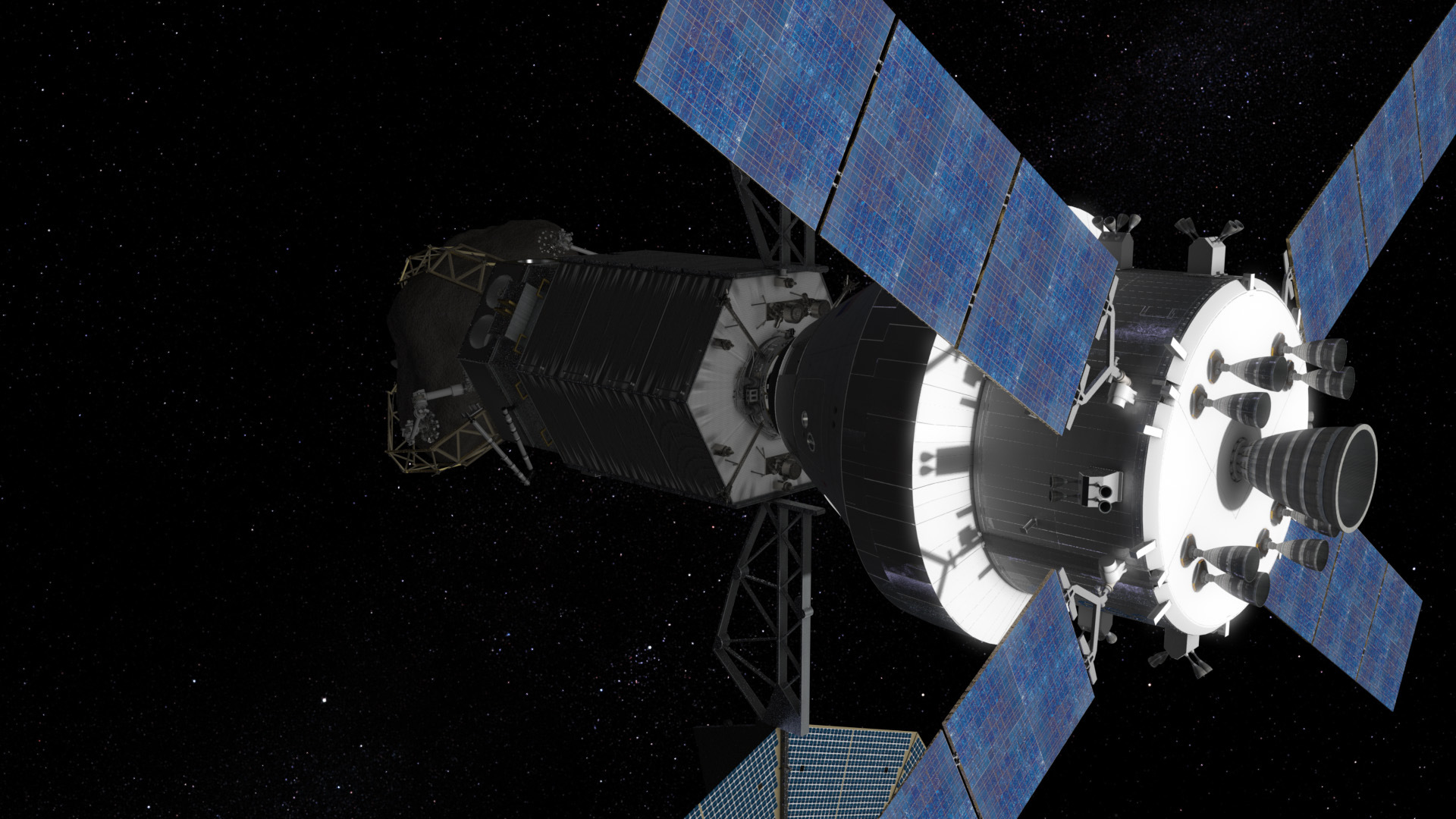
Orion crew capsule docks to NASA’s asteroid redirect vehicle grappling captured asteroid boulder orbiting the Moon.
Credit: NASA
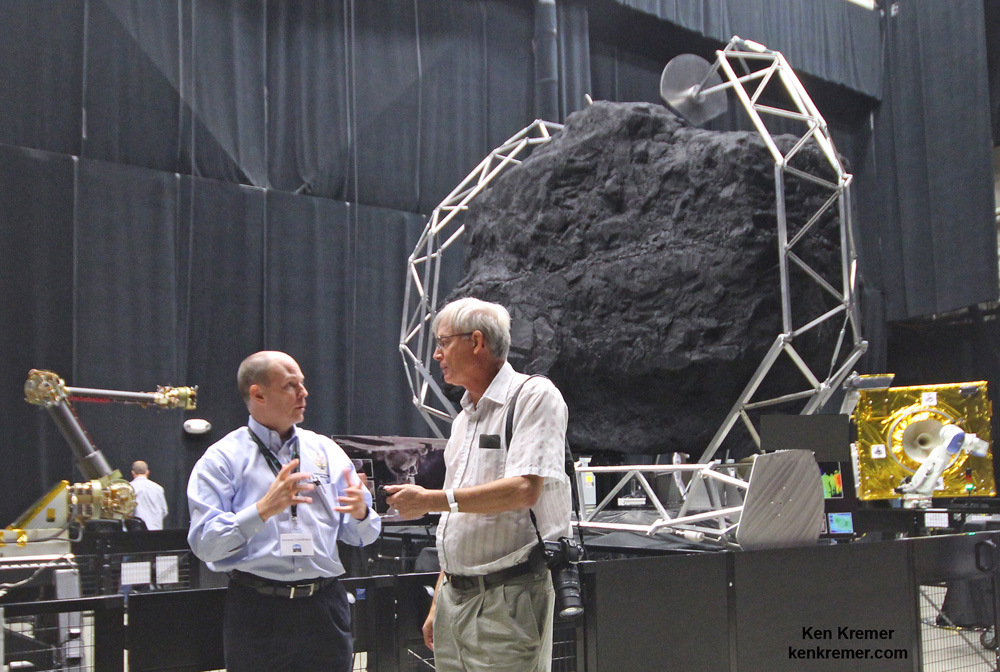
At NASA Goddard robotics lab Ben Reed/NASA Satellite Servicing Capabilities Office (SSCO)
Deputy Project Manager and Ken Kremer/Universe Today discuss the robotic servicing arm and asteroid boulder
capture mechanism being tested for NASA’s upcoming unmanned ARRM Asteroid Redirect Robotic Mission that will dock
with an Orion crew vehicle in lunar orbit by the mid 2020s for sample return collection.
Credit: Ken Kremer
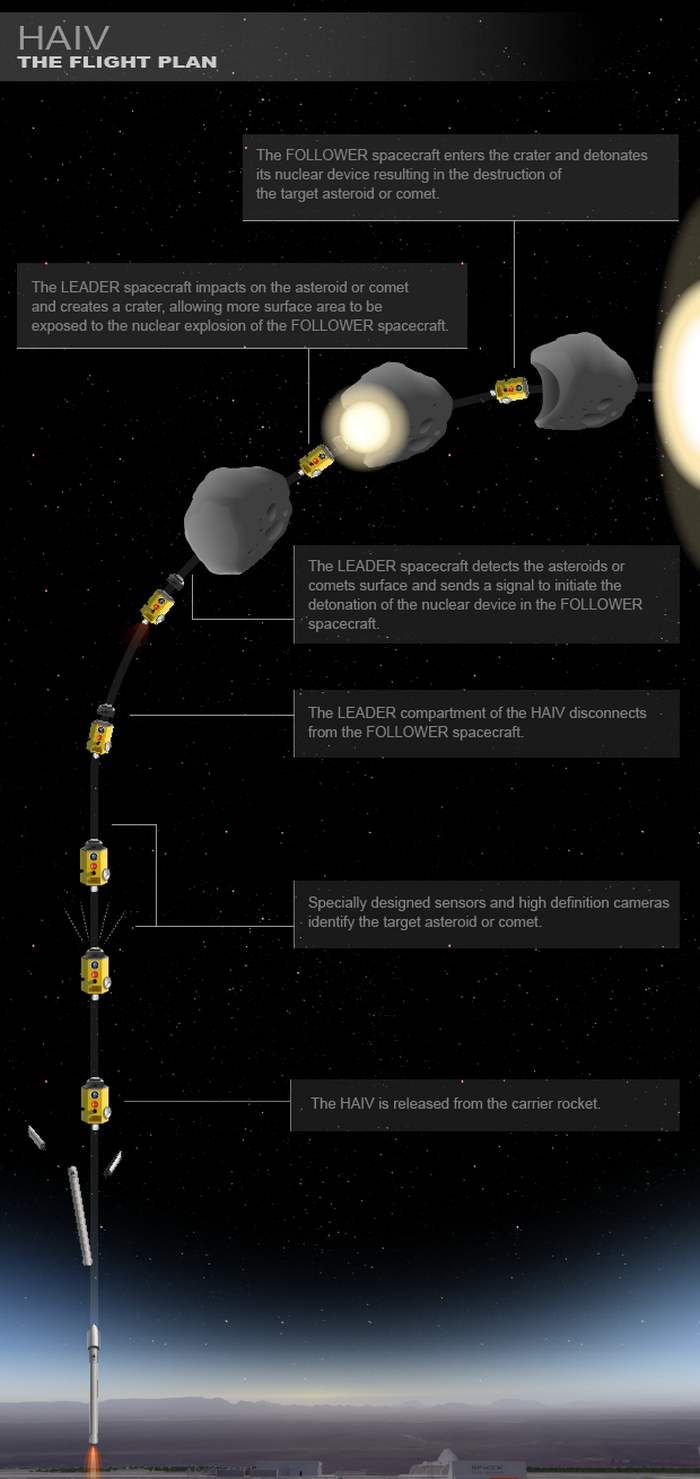
A new space project, the Emergency Asteroid Defense Project (EADP), created to protect the planet
from large asteroids and other Near Earth Objects (NEOs). Image credit NASA 'Help Defend Earth Against Asteroid Threats,'
a new campaign launched to raise money for a rapid, first line of defence against threating asteroids
Published on Mar 26, 2015 This concept animation illustrates the robotic segment of NASA's Asteroid Redirect Mission.
The Asteroid Redirect Vehicle, powered by solar electric propulsion, travels to a large asteroid
to robotically collect a boulder from its surface. It then conducts a "gravity tractor" planetary defense
demonstration on the asteroid before bringing the captured boulder to a stable orbit around the moon where
astronauts can visit, explore, and sample it. Category Science & Technology License Standard YouTube License
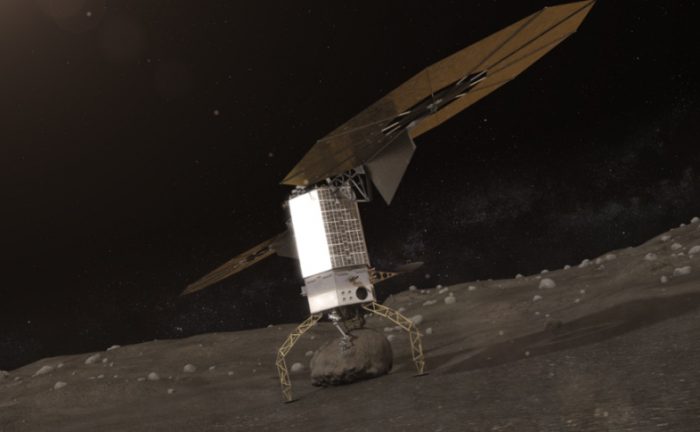
NASA's new budget could mean the end of their Asteroid Redirect Mission.
Image: NASA (Artist's illustration)
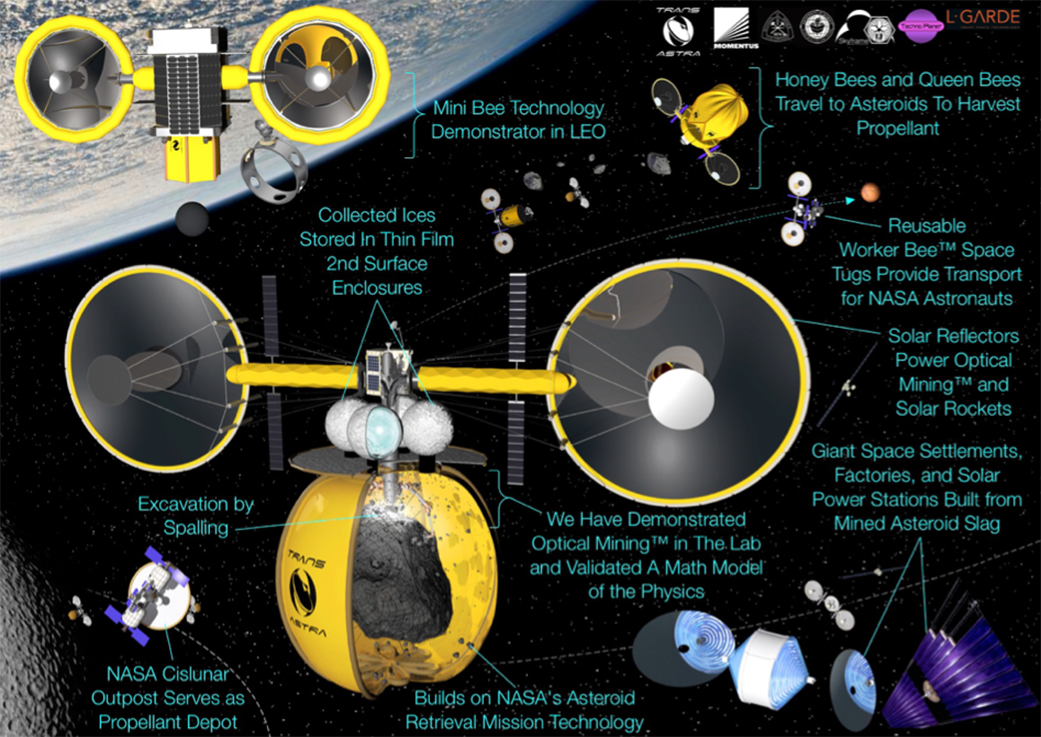
Back in April, NASA once again put out the call for proposals for the next generation of robotic explorers and missions. As part of the NASA Innovative Advanced Concepts (NIAC) Program, this consisted of researchers, scientists, and entrepreneurs coming together to submit early studies of new concepts that could one-day help advance NASA’s space exploration goals.
This concept animation illustrates the robotic segment of NASA's Asteroid Redirect Mission. The Asteroid Redirect Vehicle, powered by solar electric propulsion, travels to a large asteroid to robotically collect a boulder from its surface. It then conducts a "gravity tractor" planetary defense demonstration on the asteroid before bringing the captured boulder to a stable orbit around the moon where astronauts can visit, explore, and sample it.